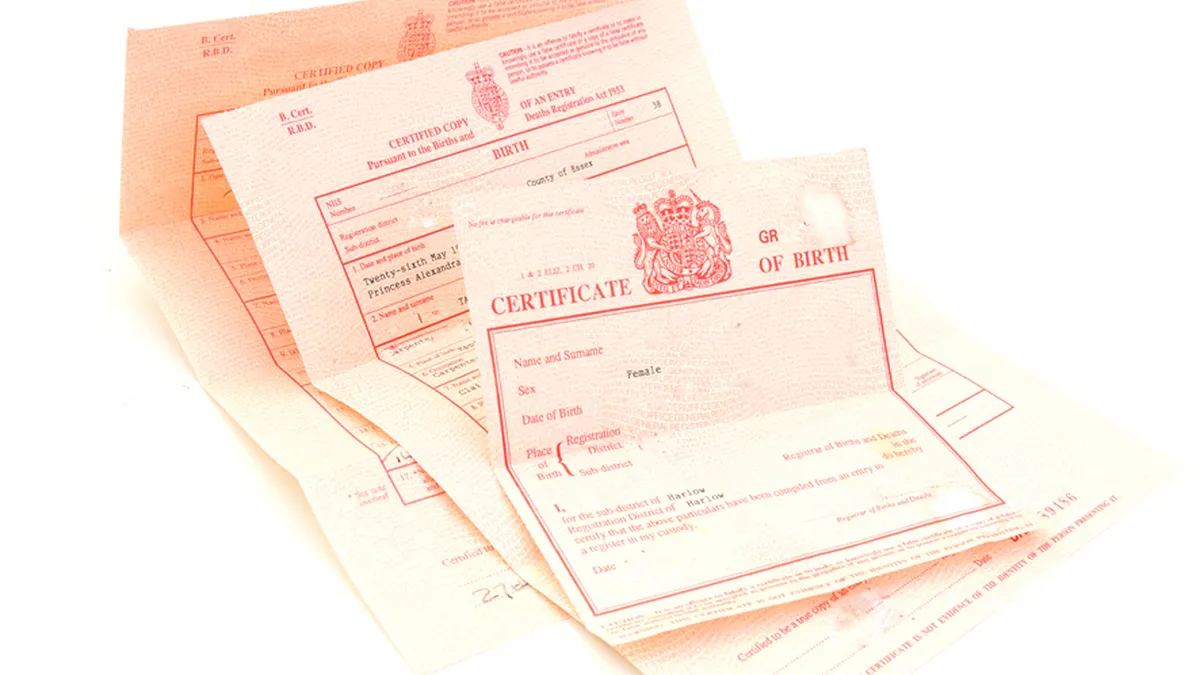Change a birth certificate with a paternity DNA test
There are many different situations for changing a birth certificate using a DNA test. As a result, it can be a confusing situation to be in. For example, there is a difference between removing the name of a father, to changing the name of the father on a birth certificate.
Local registry offices can handle small changes to a child’s birth certificate. But, for changes like altering the name of a child’s father, a General Register Office (GRO) must deal with it.
Below are some of the situations that may arise and how paternity testing can help. Also, the information provides helpful advice on how to apply to make a change to a birth certificate.

Changing the name of the father on a child’s birth certificate
You may believe that your child’s birth certificate has the wrong fathers named on it. Or, you know that the wrong fathers name is on a birth certificate. As such, you may wish to have it changed. It can be complex to change the father’s name on a birth certificate. Also, you can only apply to change the father name on the birth certificate if you can provide at least one of the following:
- A paternity test report proving that the man named on the birth certificate isn’t the biological father of the child.
- Or, a paternity test report proving that the man named on the test report is the biological father of the child.
- Or, a court order stating that the father listed on the birth certificate is not the true biological father.
- A court order stating that the father named on the court order is the true biological father of the child.
You can use a DNA Clinics paternity test report to provide the evidence needed to change the father’s name on a birth certificate. This is the DNA test to use for this purpose. Furthermore, it states that a person is or is not the biological father of a child/individual.
Yet, in some cases paternity tests are not possible. For example, this may be due to the required test participants not being available. But we can use other forms of DNA tests. For instance, these include sibling and grandparent DNA tests. Also, we can perform DNA tests to establish biological aunts and uncles. These tests are an indirect way of testing paternity.
Importantly, the DNA test chosen must be a legal DNA test. In addition, an accredited laboratory must undertake the analysis. DNA Clinics’ laboratory holds accreditation to UKAS 17025. As a result, you can use our legal DNA test reports for changing a birth certificate.
Removing the name of the father on a child’s birth certificate
What if the wrong father is registered on the birth certificate and the real father is not known? In this case, it is possible to remove the father’s name from the birth certificate. You can do this by supplying the GRO with one of the following:
- A DNA test report proving that the man named on the birth certificate isn’t the biological father of the child.
- Or, a Court Order stating that the father listed on the birth certificate is not the true biological father.
- Again, you can use our paternity test report to provide the evidence needed to remove the person’s name on a birth certificate.

How to apply for the changes required on the birth certificate
To change or remove the name of the father on a child’s birth certificate, you must apply to the GRO.
As such. you must fill in the following form. ‘Application form to remove incorrect father’s details from a birth registration’
Also, you will need to send the above-mentioned DNA test report or court order with the application form to the GRO.
If you are not sending original copies of the evidence, you should only send in documents that have been certified as true copies of the original. You can find information on how to certify documents here.
Witnessing the correction to the child’s birth certificate
Another option you may which to consider is witnessing the correction. You can request this when applying to the GRO to change the birth certificate. As such, you can say on the application form whether you want to witness the correction.
Also, the GRO may ask you to fill in ‘statutory declaration’ about the correction and forward it to them. This is a legal statement in front of someone like a judge or solicitor that they must sign, and is known as ‘attesting an oath’.
If you make a statutory declaration, you won’t have to witness the correction. But you may have to pay a fee for a statutory declaration.
Adding a father’s name to a birth certificate
This applies only if the father’s details were BLANK on the original birth certificate. As such, it is necessary to re-register the child’s birth if you want to add the natural father’s details to the birth record.
You do not require a paternity test/court order to make this change. But if required, we can undertake a peace of mind paternity test for you. This will allow a fathers’ details to be added to the birth certificate. In turn, leaving either party in no doubt of the accuracy.
What if the situation is following a marriage? For example, the parents have married after the child was born. In this case, you can re-register your child’s birth by completing the following form. ‘Application for re-registration following parents’ marriage’.
Next, take or send the completed form to the registrar of births and deaths for the district where your child was born. Or, this can be to another registrar of births and deaths in England or Wales.
What If the parents are NOT married? If the parents want the father’s name adding to the child’s birth certificate but they are not married, you must again re-register the child’s birth. You can do this by completing the form ‘Application for the re-registration of a child’s birth’
Furthermore, in the case of the mother or father of the child not being present when the changes are made to the birth certificate. As such, the absent person will need to complete a ‘Statutory declaration of acknowledgement of parentage’ form.
Service related articles...
Head Office
Crystal Health Group
The Old Chapel
Manchester
M30 0NG






